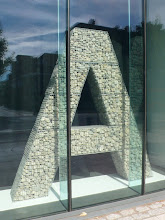This commodification of racial ‘otherness’ has also been explored by bell hooks in her article ‘Eating the Other: Desire and resistance’ (1992). She argues that a range of discourses and practices lead to the celebration of ethnicity as ‘a spice, a seasoning that can liven up the dull dish that is mainstream white culture.’ With this comes thoughts of ‘the Other’ and ‘the exotic,’ and this culinary tourism could perhaps be reframed more sinisterly as culinary colonisation. Though in some instances, I too have felt very much ‘the Other’ myself, particularly when entering the traditional kosher food shops at Stamford Hill.
Many of the Turkish restaurants in particular, produce much of their external signage in Turkish. Particular characters that do not exist in the English alphabet pepper the windows, doors and walls, creating a visual language that displays cultural difference via the typography. Another local yet global experience within Hackney.


The Vietnamese restaurants also display evidence of typographic cross-pollination, with many choosing to use the typeface Choc on their fascias. Drawn by French designer Roger Excoffon, the face is based on the traditions of Japanese brush calligraphy.

Many of these issues of authenticity are entangled and difficult to separate, not just in theory, but also during the practice and experience of the eating itself.

Are the lucky cats in the windows, or on the bars, of the Vietnamese shops and restaurants there because that is what one expects, or because the owner wants to ensure the protection and continued success of their business? Are the shrines with the paper money there for show or for honouring the dead? Is it what I and other customers expect, or is it actually a private act being played out in a public place? Are the women in Sömine just making the bread for the day, or are they ‘performing’ for the customers and at the same time signifying that the bread is homemade and thus ‘real’? Are the television sets part of the experience too, or are they for bored customers or idle waiting staff? Sometimes I think you can tell. For example, the television in the Hanoi Café was positioned in the corridor between the bar and kitchen, not a space a customer would pass through. There was one chair in front of it. This was there for the waitress during the slower hours of the afternoon, it was not for me. Although the television in Tropicalia is positioned so that both customers and staff can watch, it does not seem to be performing any other function than providing information and entertainment, often via Brazilian channels. Timur Ögüt (2008) suggests that the bread making women in Sömine are not providing an act of ‘staged authenticity’ (MacCannel 1973), as they are dressed in ordinary clothes, oblivious to customers and working as if cooking at home. I wonder if this is always the case though, as some of the cafés place the women directly in the window. This doesn’t seem an inconsequential positioning.
I think what I enjoy more is an ordinariness, rather than an authenticity. Although perhaps, that is how I define authenticity myself? In my eating experiences I have found ordinariness amongst my Turkish breakfast at Sömine, (regardless of the bread making women and whether or not they are significant), the Roti Stop, and at the curry stall at Ridley Road market—and this is not to say that either of the experiences were not also extraordinary in some ways. Just that there was a lack of pretentiousness somehow, a sense that the business was in the business of satisfying a basic human need, rather than providing me with some kind of pre-ordained ethnic experience.


No comments:
Post a Comment